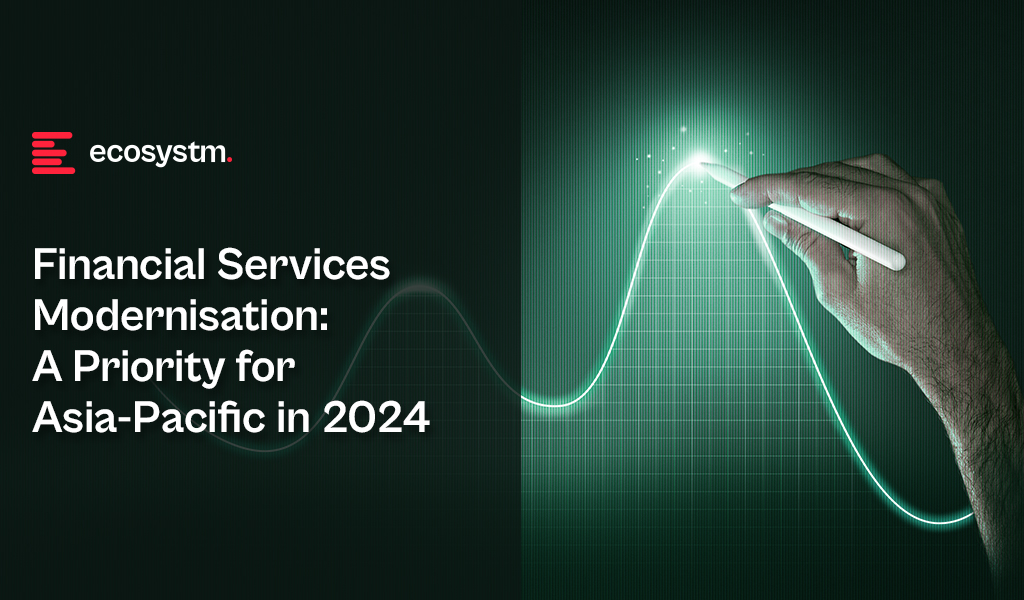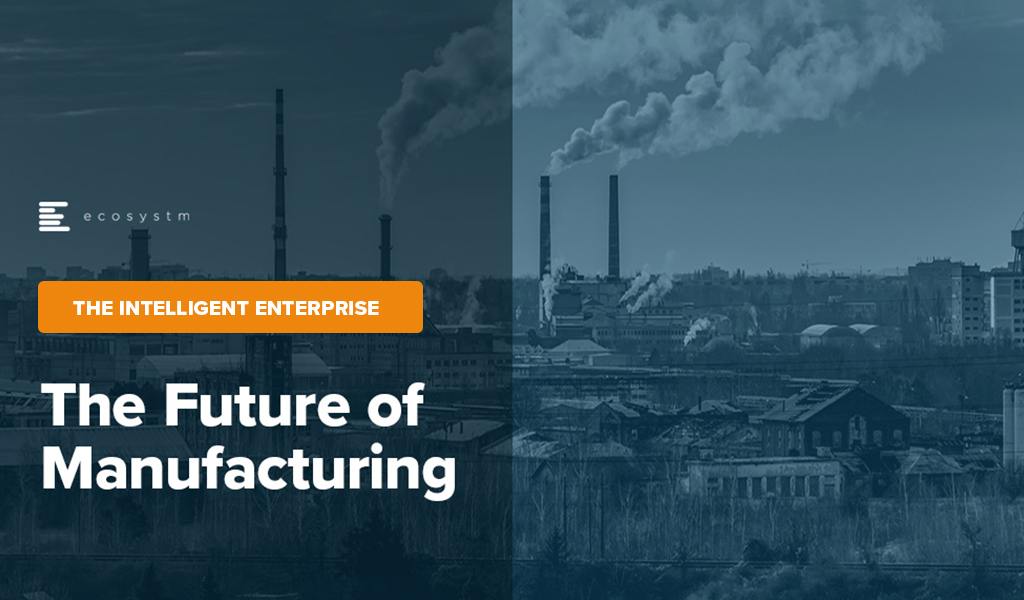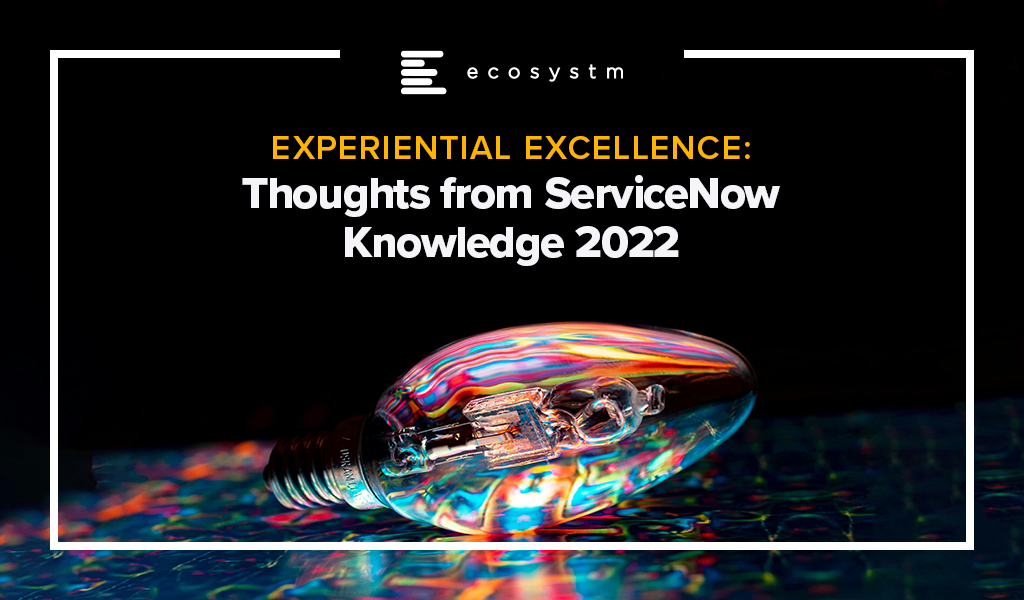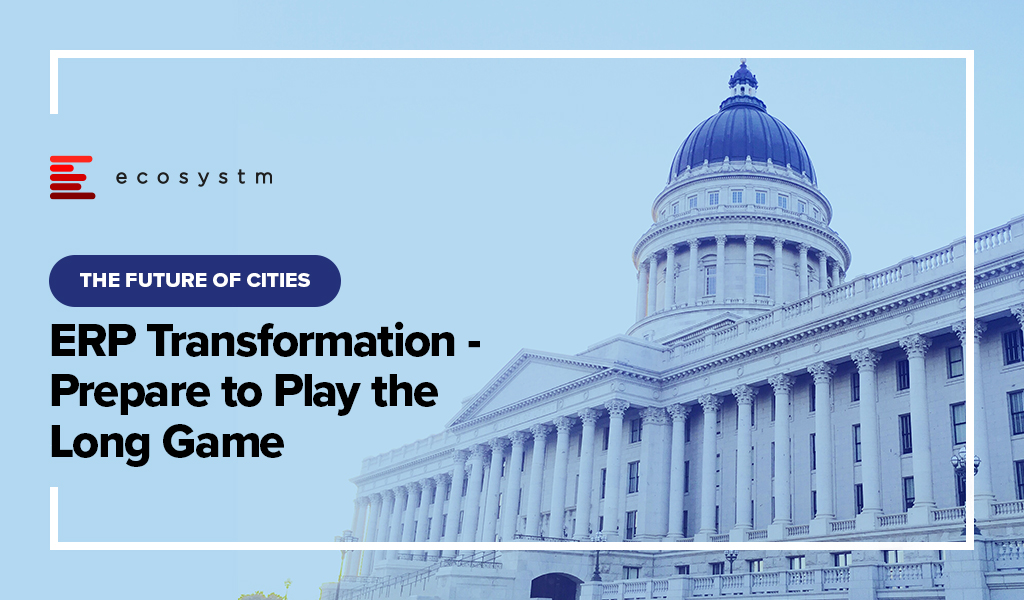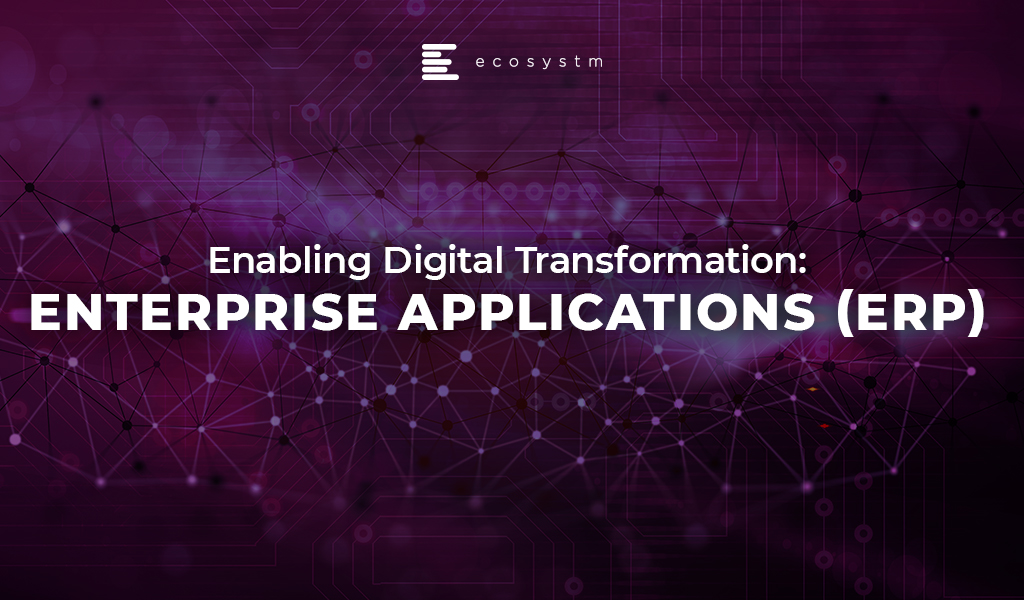Banks, insurers, and other financial services organisations in Asia Pacific have plenty of tech challenges and opportunities including cybersecurity and data privacy management; adapting to tech and customer demands, AI and ML integration; use of big data for personalisation; and regulatory compliance across business functions and transformation journeys.
Modernisation Projects are Back on the Table
An emerging tech challenge lies in modernising, replacing, or retiring legacy platforms and systems. Many banks still rely on outdated core systems, hindering agility, innovation, and personalised customer experiences. Migrating to modern, cloud-based systems presents challenges due to complexity, cost, and potential disruptions. Insurers are evaluating key platforms amid evolving customer needs and business models; ERP and HCM systems are up for renewal; data warehouses are transforming for the AI era; even CRM and other CX platforms are being modernised as older customer data stores and models become obsolete.
For the past five years, many financial services organisations in the region have sidelined large legacy modernisation projects, opting instead to make incremental transformations around their core systems. However, it is becoming critical for them to take action to secure their long-term survival and success.
Benefits of legacy modernisation include:
- Improved operational efficiency and agility
- Enhanced customer experience and satisfaction
- Increased innovation and competitive advantage
- Reduced security risks and compliance costs
- Preparation for future technologies
However, legacy modernisation and migration initiatives carry significant risks. For instance, TSB faced a USD 62M fine due to a failed mainframe migration, resulting in severe disruptions to branch operations and core banking functions like telephone, online, and mobile banking. The migration failure led to 225,492 complaints between 2018 and 2019, affecting all 550 branches and required TSB to pay more than USD 25M to customers through a redress program.
Modernisation Options
- Rip and Replace. Replacing the entire legacy system with a modern, cloud-based solution. While offering a clean slate and faster time to value, it’s expensive, disruptive, and carries migration risks.
- Refactoring. Rewriting key components of the legacy system with modern languages and architectures. It’s less disruptive than rip-and-replace but requires skilled developers and can still be time-consuming.
- Encapsulation. Wrapping the legacy system with a modern API layer, allowing integration with newer applications and tools. It’s quicker and cheaper than other options but doesn’t fully address underlying limitations.
- Microservices-based Modernisation. Breaking down the legacy system into smaller, independent services that can be individually modernised over time. It offers flexibility and agility but requires careful planning and execution.

Financial Systems on the Block for Legacy Modernisation
Data Analytics Platforms. Harnessing customer data for insights and targeted offerings is vital. Legacy data warehouses often struggle with real-time data processing and advanced analytics.
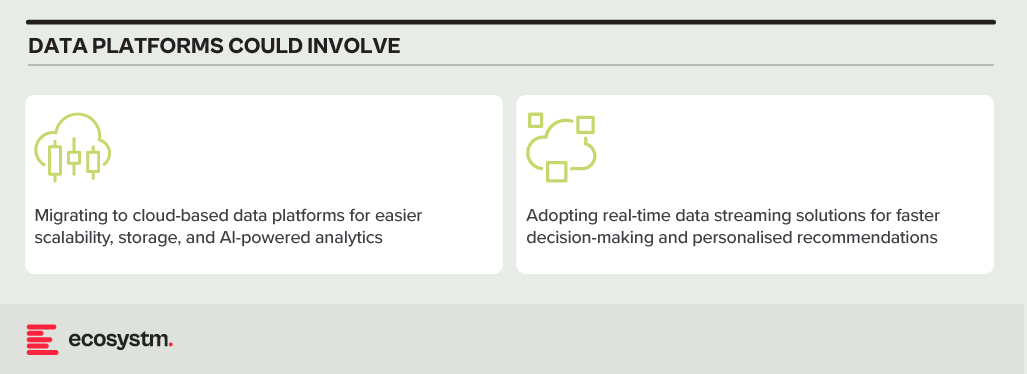
CRM Systems. Effective customer interactions require integrated CRM platforms. Outdated systems might hinder communication, personalisation, and cross-selling opportunities.

Payment Processing Systems. Legacy systems might lack support for real-time secure transactions, mobile payments, and cross-border transactions.

Core Banking Systems (CBS). The central nervous system of any bank, handling account management, transactions, and loan processing. Many Asia Pacific banks rely on aging, monolithic CBS with limited digital capabilities.

Digital Banking Platforms. While several Asia Pacific banks provide basic online banking, genuine digital transformation requires mobile-first apps with features such as instant payments, personalised financial management tools, and seamless third-party service integration.
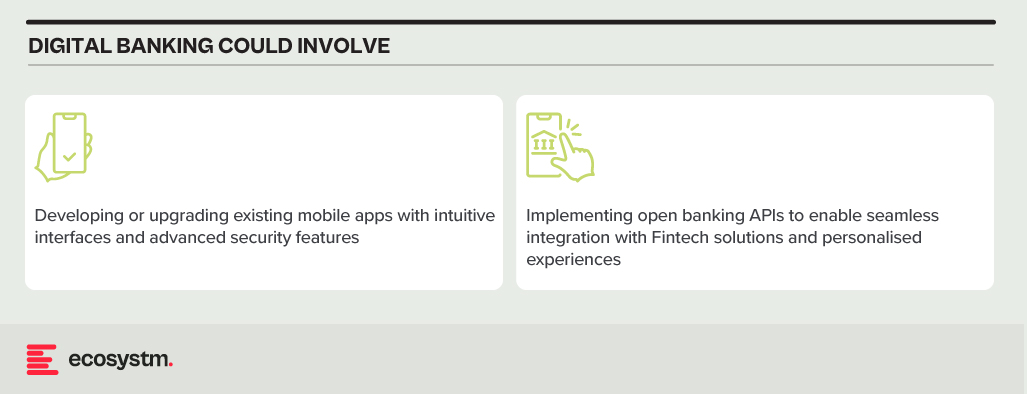
Modernising Technical Approaches and Architectures
Numerous technical factors need to be addressed during modernisation, with decisions needing to be made upfront. Questions around data migration, testing and QA, change management, data security and development methodology (agile, waterfall or hybrid) need consideration.
Best practices in legacy migration have taught some lessons.
Adopt a data fabric platform. Many organisations find that centralising all data into a single warehouse or platform rarely justifies the time and effort invested. Businesses continually generate new data, adding sources, and updating systems. Managing data where it resides might seem complex initially. However, in the mid to longer term, this approach offers clearer benefits as it reduces the likelihood of data discrepancies, obsolescence, and governance challenges.
Focus modernisation on the customer metrics and journeys that matter. Legacy modernisation need not be an all-or-nothing initiative. While systems like mainframes may require complete replacement, even some mainframe-based software can be partially modernised to enable services for external applications and processes. Assess the potential of modernising components of existing systems rather than opting for a complete overhaul of legacy applications.
Embrace the cloud and SaaS. With the growing network of hyperscaler cloud locations and data centres, there’s likely to be a solution that enables organisations to operate in the cloud while meeting data residency requirements. Even if not available now, it could align with the timeline of a multi-year legacy modernisation project. Whenever feasible, prioritise SaaS over cloud-hosted applications to streamline management, reduce overhead, and mitigate risk.
Build for customisation for local and regional needs. Many legacy applications are highly customised, leading to inflexibility, high management costs, and complexity in integration. Today, software providers advocate minimising configuration and customisation, opting for “out-of-the-box” solutions with room for localisation. The operations in different countries may require reconfiguration due to varying regulations and competitive pressures. Architecting applications to isolate these configurations simplifies system management, facilitating continuous improvement as new services are introduced by platform providers or ISV partners.
Explore the opportunity for emerging technologies. Emerging technologies, notably AI, can significantly enhance the speed and value of new systems. In the near future, AI will automate much of the work in data migration and systems integration, reducing the need for human involvement. When humans are required, low-code or no-code tools can expedite development. Private 5G services may eliminate the need for new network builds in branches or offices. AIOps and Observability can improve system uptime at lower costs. Considering these capabilities in platform decisions and understanding the ecosystem of partners and providers can accelerate modernisation journeys and deliver value faster.
Don’t Let Analysis Paralysis Slow Down Your Journey!
Yes, there are a lot of decisions that need to be made; and yes, there is much at stake if things go wrong! However, there’s a greater risk in not taking action. Maintaining a laser-focus on the customer and business outcomes that need to be achieved will help align many decisions. Keeping the customer experience as the guiding light ensures organisations are always moving in the right direction.

2024 and 2025 are looking good for IT services providers – particularly in Asia Pacific. All types of providers – from IT consultants to managed services VARs and systems integrators – will benefit from a few converging events.
However, amidst increasing demand, service providers are also challenged with cost control measures imposed in organisations – and this is heightened by the challenge of finding and retaining their best people as competition for skills intensifies. Providers that service mid-market clients might find it hard to compete and grow without significant process automation to compensate for the higher employee costs.
Why Organisations are Opting for IT Service
- Organisations are seeking further cost reductions. Managed services providers will see more opportunities to take cost and complexity out of organisation’s IT functions. The focus in 2024 will be less on “managing” services and more on “transforming” them using ML, AI, and automation to reduce cost and improve value.
- Big app upgrades are back on the agenda. SAP is going above and beyond to incentivise their customers and partners to migrate their on-premises and hyperscale hosted instances to true cloud ERP. Initiatives such as Rise with SAP have been further expanded and improved to accelerate the transition. Salesforce customers are also looking to streamline their deployments while also taking advantage of the new AI and data capabilities. But many of these projects will still be complex and time-consuming.
- Cloud deployments are getting more complex. For many organisations, the simple cloud migrations are done. This is the stage of replatforming, retiring, and refactoring applications to take advantage of public and hybrid cloud capabilities. These are not simple lift and shift – or switch to SaaS – engagements.
- AI will drive a greater need for process improvement and transformation. This will happen along with associated change management and training programs. While it is still early days for GenAI, before the end of 2024, many organisations will move beyond experimentation to department or enterprise wide GenAI initiatives.
- Increasing cybersecurity and data governance demands will prolong the security skill shortage. More organisations will turn to managed security services providers and cybersecurity consultants to help them develop their strategy and response to the rising threat levels.
Choosing the Right Cost Model for IT Services
Buyers of IT services must implement strict cost-control measures and consider various approaches to align costs with business and customer outcomes, including different cost models:
Fixed-Price Contracts. These contracts set a firm price for the entire project or specific deliverables. Ideal when project scope is clear, they offer budget certainty upfront but demand detailed specifications, potentially leading to higher initial quotes due to the provider assuming more risk.
Time and Materials (T&M) Contracts with Caps. Payment is based on actual time and materials used, with negotiated caps to prevent budget overruns. Combining flexibility with cost predictability, this model offers some control over total expenses.
Performance-Based Pricing. Fees are tied to service provider performance, incentivising achievement of specific KPIs or milestones. This aligns provider interests with client goals, potentially resulting in cost savings and improved service quality.
Retainer Agreements with Scope Limits. Recurring fees are paid for ongoing services, with defined limits on work scope or hours within a given period. This arrangement ensures resource availability while containing expenses, particularly suitable for ongoing support services.
Other Strategies for Cost Efficiency and Effective Management
Technology leaders should also consider implementing some of the following strategies:
Phased Payments. Structuring payments in phases, tied to the completion of project milestones, helps manage cash flow and provides a financial incentive for the service provider to meet deadlines and deliverables. It also allows for regular financial reviews and adjustments if the project scope changes.
Cost Transparency and Itemisation. Detailed billing that itemises the costs of labour, materials, and other expenses provides transparency to verify charges, track spending against the budget, and identify areas for potential savings.
Volume Discounts and Negotiated Rates. Negotiating volume discounts or preferential rates for long-term or large-scale engagements, makes providers to offer reduced rates for a commitment to a certain volume of work or an extended contract duration.
Utilisation of Shared Services or Cloud Solutions. Opting for shared or cloud-based solutions where feasible, offers economies of scale and reduces the need for expensive, dedicated infrastructure and resources.
Regular Review and Adjustment. Conducting regular reviews of the services and expenses with the provider to ensure alignment with the budget and objectives, prepares organisations to adjust the scope, renegotiate terms, or implement cost-saving measures as needed.
Exit Strategy. Planning an exit strategy that include provisions for contract termination, transition services, protects an organisation in case the partnership needs to be dissolved.
Conclusion
Many businesses swing between insourcing and outsourcing technology capabilities – with the recent trend moving towards insourcing development and outsourcing infrastructure to the public cloud. But 2024 will see demand for all types of IT services across nearly every geography and industry. Tech services providers can bring significant value to your business – but improved management, monitoring, and governance will ensure that this value is delivered at a fair cost.

The Manufacturing industry is at crossroads today. It faces challenges such as geopolitical risks, supply chain disruptions, changing regulatory environments, workforce shortages, and changing consumer demands. Overcoming these requires innovation, collaboration, and proactive adaptation.
Fortunately, many of these challenges can be mitigated by technology. The future of Manufacturing will be shaped by advanced technology, automation, and AI. We are seeing early evidence of how smart factories, robotics, and 3D printing are transforming production processes for increased efficiency and customisation.
Manufacturing is all set to become more agile, efficient, and sustainable.
Read on to find out the changing priorities and key trends in Manufacturing; about the World Economic Forum’s Global Lighthouse Network initiative; and where Ecosystm advisor Kaushik Ghatak sees as the Future of Manufacturing.
Click here to download ‘The Future of Manufacturing’ as a PDF

In comparison to the golden days of the second half of the 20th century, the last two decades have been hard hit. The fragility of globalisation and that prosperous economic model so beautifully enabled by a 70-year technology revolution, have tested business continuity and disaster recovery plans like never before.
Looking Back
During this time the global community has lurched through tech and property driven financial crisis. It has endured endemic terrorism, and a crippling pandemic. And it has been fragmented by the existential threats of energy and climate, world order dislocation, and challenges to once unshakable fiat money. The wonderfully efficient business models and supply chains enabled by W. Edwards Deming following World War II are fractured and broken. Despite all these challenges, the desire for a hopeful return to a golden age of global prosperity is clearly evident. Just maybe not as we know it.
The period between W. Edwards Deming and Dotcom (let’s say 1950-2000) ushered in ERP and the modern software revolution. Over decades, highly refined processes and perfected workflows shifted from paper and clipboards into mainframe environments – from conveyor belts to computing and from ledgers to LANs.
In the progression to slightly less monolithic server-based business applications, millions of lines of customised code are transferred into configurable data fields, coupled with ready-made workflow connections, and processes based on standards set by leading companies and their representative bodies. The standardisation of business systems lowered the entry point for new enterprises, spawned new industries, and ultimately allowed SaaS to proliferate.
ERP was a true revolution in automating process and quality management systems and building the modern world. Cloud was then a transformation for ERP. It was an innovation on an original idea, but it wasn’t the next revolution. In many ways, by standardising business systems, we went too far. The vendor market over-estimated what configuration over customisation could achieve and ultimately set unachievable expectations in relation to client outcomes. On the client side, end-user organisations seized on vanilla processes and workflows and got lazy about working out solutions to their own problems. In chasing out-of-the-box software they sought to expedite, and even outsource, the hard work. In doing so, the core driver of 20th century post war economic prosperity was forgotten.
Looking Ahead
In business transformations there are no short cuts to results
One of the defining social drivers of the 21st century is a move towards the concept of individualism. We see it everywhere. In the transformation of traditional marriage, family, and identity structures. In the migration away from the concept of houses and homes, in the rise of the gig economy, and even in the regulatory schemes of government, financial and insurance services. The individual sits at the centre of new globalisation economic design and is giving rise to the next business systems revolution. At ServiceNow Knowledge 2022 I was fortunate to hear Dr Catriona Wallace and the Hon Victor Dominello MP discuss it in the context of their recent research. Dr Wallace described the trend as, “know me and care about me”, and discussed the requirements to operate within a world of both hyper-personalisation and ethical restraint.
This time however the business systems revolution to support this change is not being driven by process efficiencies and quality management, though they remain important tools. It is being driven by the pursuit of Experiential Excellence. You’ve heard it many times before and once you’ve seen it you can’t unsee it – Customer Experience, Employee Experience, Digital Experience. These are all ambitions of populist organisational and service transformation agendas with Experiential Excellence at their core.
For business and technology leaders it requires a mental shift. Traditional ERP alone will not get us there. It means a new business systems methodology is required to accompany, and reflect the challenges of the modern world, not one created more than 70 years ago.
An Experiential Excellence platform isn’t just a new ERP. It’s a new type of system capable of operating at speed and with breakthrough power; but it is also capable of breaking the intellectual shackles of pre-configuration to help organisations recapture the essence of what Deming started so long ago and we somehow lost along the way: The ability to think about and solve any kind of complex, innovative and multi-objective, multi-stakeholder problem. And I think that ServiceNow, and the Now Platform, is the first company (and business system) to do it.
The sense of something special was clearly evident among ServiceNow staff and partners, at the event. But I don’t think they have yet nailed the messaging. And the reason is because there is still such a strong gravitational pull towards the old ERP model among end-user clients. This reinforces a need for ServiceNow to still define itself by the last 50 years of system technology rather than the next 50.
That needs to change. So, next time when a client asks, is ServiceNow an ERP or is it an RPA platform or something else, the answer is – it is neither, and both, and all, and sometimes at the same time. This wonderful superposition, the same quantum computing characteristic that allows a particle to be one thing, or either, or both, all at the same time, is the very essence of their opportunity – should they wish to take it.
To be a leader in the new quantum age of computing will mean taking the brave step of unshackling themselves from the 20th century view of ERP and lead the redefinition of business systems for the quantum age. Let the revolution begin.

It is an incredible time of change for the city and regional governments where every strategic activity – especially in these globally challenging times – presents a significant opportunity for transformation. To continue to meet the changing needs of the communities they serve, every modern city government’s technology story is a work in progress. While this is the mantra for successful continuous improvement it also describes the best strategic approach for how municipalities should manage their corporate application replacement programs.
Unfortunately, significant systems upgrade and replacement programs are regularly approached as complex, multi-tasking activities that have a hard start, a defined program, and a date-stamped end. In taking this traditional project implementation approach, intuitively, many organisations believe that doing as much as possible, in as quick a time as possible, ultimately helps to achieve twice as much within the same time. The result is more likely to be half as much, and at lower levels of quality and enjoyment for all involved. This manifests as project scope creep and budget overruns.
Aside from these big bang approaches, thanks to large implementation costs and stringent regulatory oversight, local governments are also forced to think upfront about the potential future value created by a significant core system technology change. The pressure of moving at high speed, and with a dominant technology focus, can obscure both the true organisational cost and ultimate value of the program. This mentality prevails even when it is acknowledged that activities associated with a transformation program will eventually usher in a period of significant change – that is not limited to the changing core corporate applications environment itself.
The 4-Part ERP Transformation Trap is All Too Common in City Government
An over-reliance on technology to deliver business transformation outcomes. Local governments everywhere continue to pursue strategic plans that are either wholly defined or implicitly reliant on world-class customer experience (CX), employee experience (EX), and digital transformation (DX) capabilities. Despite these being business-oriented strategies, organisations then pursue an over-reliance on technology – usually winner-take-all ERP led procurements – to achieve them.
Choosing an industry solution focused on the wrong business model. The chance of achieving these digital transformation outcomes is further obscured when the customer is not central to the data model. The core corporate application technology underpinning the sector’s leading ERP programs is largely based on a property-centric model – where the customer is a subordinate attribute of a property, and the property asset defines the business process and individual. It is a challenge for any council to deliver contemporary customer-first digital transformation with a property-centric approach. To realise customer and employee-centric outcomes, councils must therefore rethink their project’s business methodology and ask themselves, “what is our primary focus here?”. This is never more important than when replacing legacy systems.
Inability to realise that a winner-take-all ERP solution is not an architectural choice. ERP is important but it is not everything. The traditional council ERP is just one important part of an overall capability that allows authorities to longitudinally manage the impacts and opportunities of change across their organisation, communities, and stakeholder ecosystems. Having chosen a sector specific ERP solution, city governments realise too late that no single technology vendor has a best-of-breed solution to achieve the desired DX outcomes. That requires a more sophisticated architectural approach.
Failure to acknowledge there is no finish line to transformation. Like many worthwhile activities, the prize in DX is in the journey, not in the cup. While there can be an end to “project scope”, there should be no “end point” for an ERP transformation program. Only once these challenges are acknowledged and accepted, can transformation be assimilated into the organisation to ensure the council is technically capable of delivering the implicit outcome for the organisation. This could simply be defined as ‘a contemporary business approach to managing the money, the assets, the community, the customers, and the staff of regional government.’
A Better Way: Re-Architecting for Project Success
Where opportunities to meet increasing CX and EX demands arise, especially through ERP and corporate application renewal programs, successful projects in contemporary councils require a service-oriented architecture not found in contemporary or legacy ERP systems alone.
Beyond the property-centric challenges already outlined, even contemporary systems and suppliers can be among the least flexible to the changing data management requirements of many organisations which call for significantly more robust data, integration and application friendly infrastructure management environments.
Customer centricity, data management, integration and software infrastructure capabilities must take precedent over an aging view of single-vendor dominance in the city government sector, especially in middle- and back-office functions, which are typically void of true differentiation opportunities and prone to confining organisations to technology-led and locked projects.
Rather than tendering for a single software provider or platform, contemporary city governments must ditch the old approach to procuring a winning ERP vendor and take steps to establish the following Big 5 platform capabilities (Figure 1). And then foster the contemporary workforce to support them.

For several decades now many organisations have attempted to short-circuit the city government ERP challenge. Fundamentally, technology transformation is not possible without technology change. A non-negotiable part of that change is a shift away from the psychology of brand-based procurement towards a new architectural approach which, like all businesses, is adaptable to change over a long period of time.

ERP serves as an important component that connects various business operations and verticals in an organisation. As a part of digital strategy, many organisations have started adopting digital tools and technologies where an Enterprise Resource Planning (ERP) solution is one of the primary components. ERP was originally applied to manufacturing systems, but today it describes the software at the core of an organisation’s business, without which it could not function.
ERP software has evolved significantly since it first came into widespread existence in the 1980s. Major vendors like SAP and Oracle offer sophisticated suites of software that integrate several functions. Other vendors offer ‘best-of-breed’ applications optimised for a particular purpose or market segment. The implementation, maintenance and efficient management of ERP software is a large industry in its own right. ERP services companies are a major part of the global ICT industry.
Enterprise applications are core to the business
All enterprises run core application software essential to their business. These include financial software and applications like human resources/human capital management (HR/HCM) and customer relationship management (CRM). They also typically run mission-critical applications like manufacturing, distribution and logistics and others, depending on their vertical market sector. ERP better integrates various business units and data flowing in departments such as backend office operations, accounting, inventory management and finance management throughout an organisation.
Some of the industries benefitting from ERP include banks and insurance companies that run vast client databases, manufacturers running sophisticated production and asset management systems, retailers, government agencies, educational institutions, transport companies – organisations in every market sector – run specialised applications that enable them to efficiently run and manage their operations.
Cloud transforming ERP
Like all applications, ERP systems are increasingly becoming cloud-based, or use cloud infrastructure for much of their functionality. Today, almost all the major vendors are migrating their product offerings to the cloud, using the SaaS (Software-as-a-Service) model.
As ERP migrates to the cloud it is changing the business models of both vendors and user organisations. It is also affecting the ERP services market. The global Ecosystm study on Cloud ERP Solutions – Best Practices and Vendor Selection finds that organisations which are planning to use Cloud ERP solutions prioritise industry expertise and local presence of data centres as a significant selection criterion for vendors.
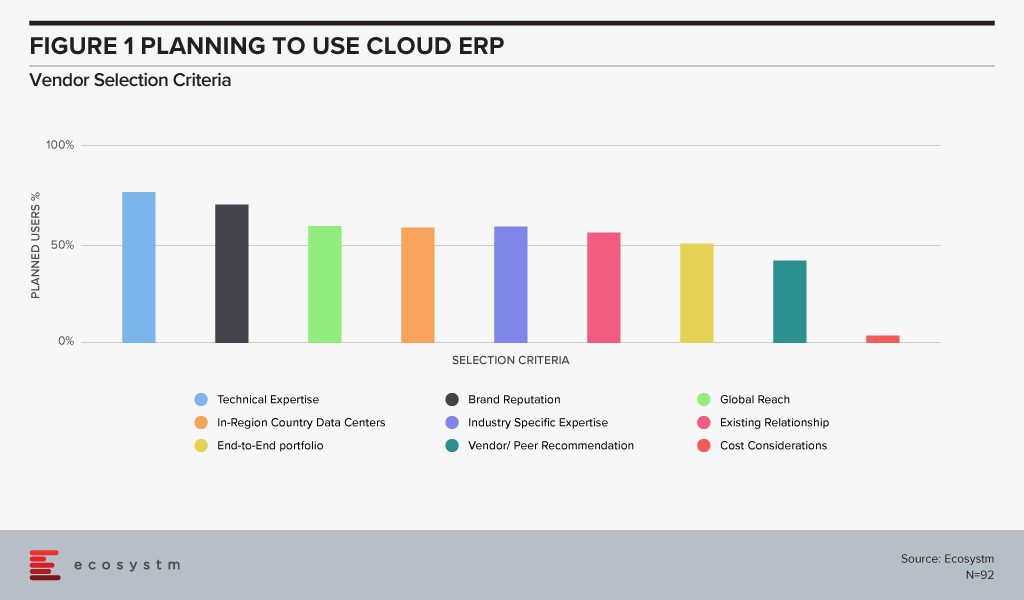
Cloud computing encourages a pay-per-use subscription model for ERP and other applications which are changing the structure of the industry. Users are moving their budgets from the CapEx (capital expenditure) to the OpEx (operational expenditure) model, where outgoings are better able to be varied according to use.
A giant, mission-critical matrix
ERP is referred to as ‘mission-critical’ applications for a very good reason. An organisation’s core business functions are non-negotiable and without them, the organisation will cease to function. In addition, they need to be robust and flexible and capable of meeting the demands of changing technologies, economics and business conditions.
In this increasingly connected world, ERP extends beyond the enterprise. Modern ERP systems are interconnected in a giant business matrix that enables a world of global commerce. ERP systems support multiple interfaces and act as a modular system to any organisations demands. Their importance to the global business should not be underestimated.


